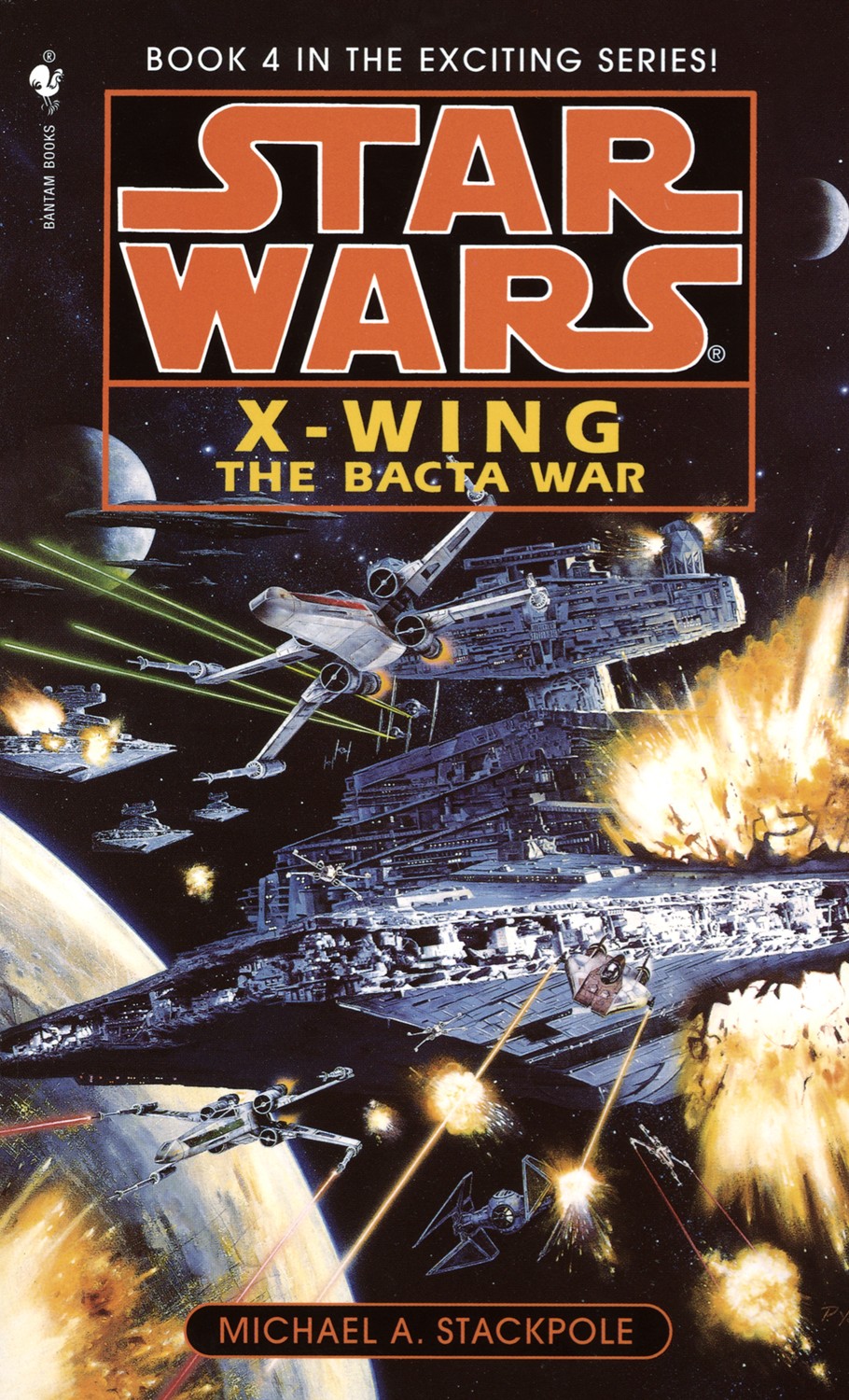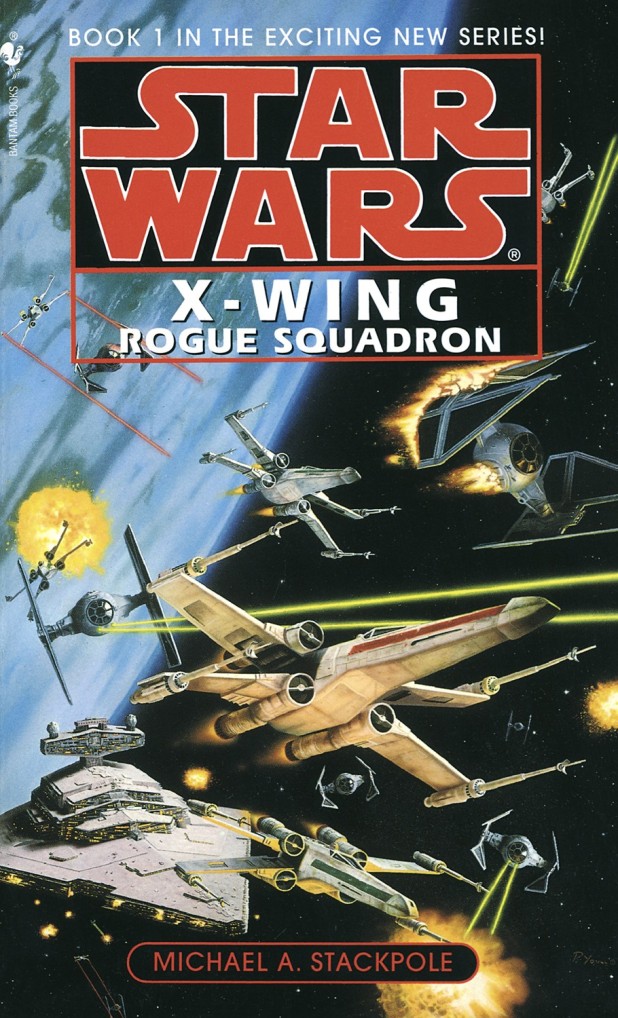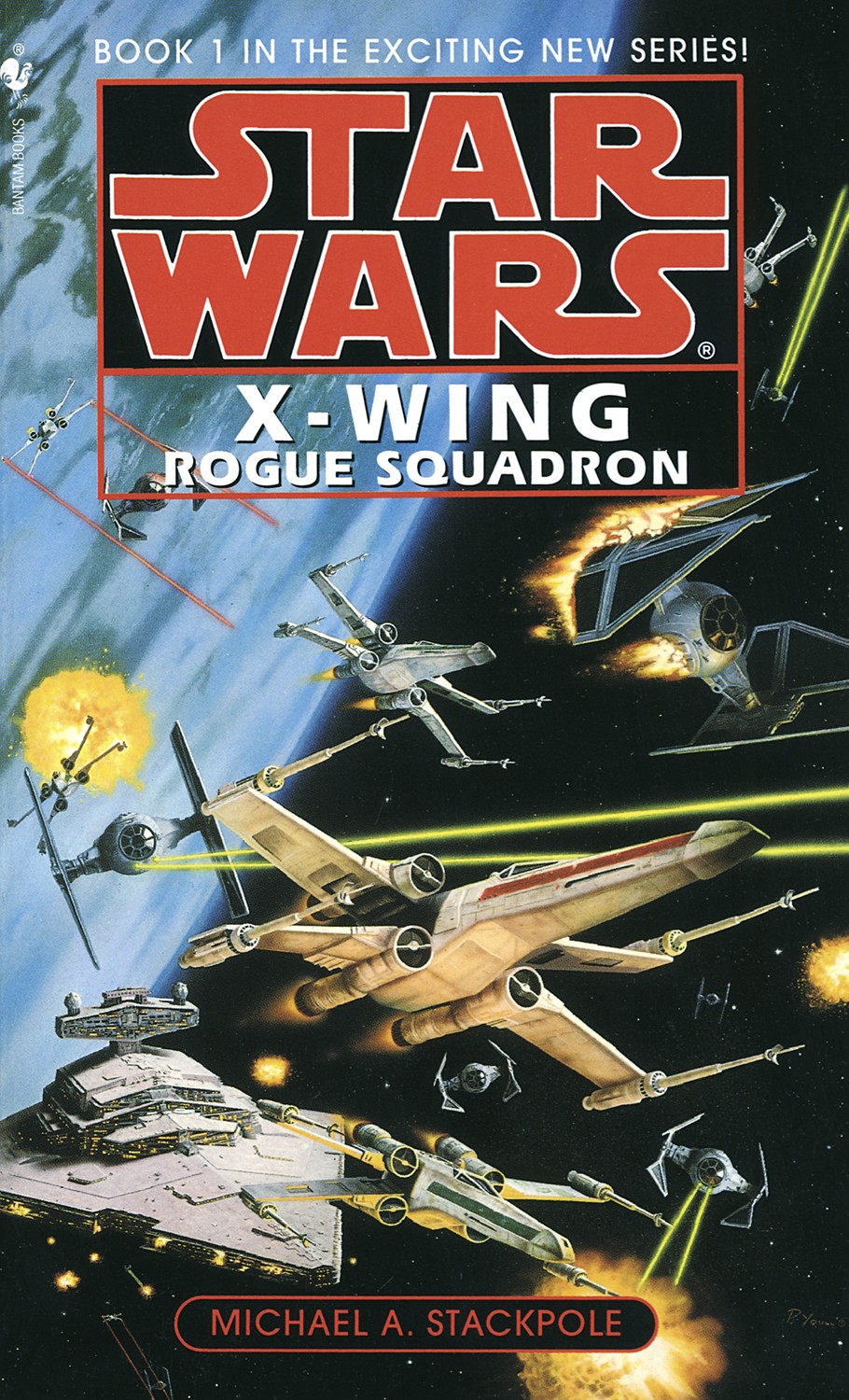One of my niche areas of interest, in terms of science fiction and general nerdery, is the way that the Star Wars saga evolved over the years. I’ve lived through very nearly all of it–Star Wars, now known as A New Hope, was released in 1977, and I was born in 1979–and have had a front row seat for the series as it grew and changed (and was ultimately slaughtered and carved up into a parody by Disney, but that’s another story. Uhh…apologies if you are a Disney canon fan–stick around, it has a few good points too).

Corran Horn. Courtesy of Wookieepedia.
In this area, I’ve mostly done my own work; I haven’t read much of the material that’s been written about Star Wars, but have worked from the stories themselves. That’s my disclaimer here: I could be wildly wrong in some things I say. I think, though, that I’ll keep it simple enough here that we can be confident in what I suggest. It’s not much, anyway, at least for today’s post.
George Lucas’s vision for Star Wars seems to have been very different in its original form. (Even the term “original form” is misleading; it’s not clear that he had a cohesive vision at all to start with, as evidenced by how often even the character names changed!) That’s not at all unusual–every story has its rough drafts–but it comes as a surprise to people, because Star Wars is such an institution these days. It all feels very codified and canonized–but that’s never been the case, not even once. There’s always been spinoff material, since not very long after the original movie (looking at you, Splinter of the Mind’s Eye, you wonderful and bizarre old friend), and it’s always told tales that didn’t quite jell with the films, or even with its own components. And that’s not even getting to Disney’s change in canon!
I first became aware of this phenomenon many years ago, when I–still a child–picked up a copy of the novelization of the screenplay of what was then called simply Star Wars, now redubbed Star Wars, Episode IV: A New Hope. (That it’s the novelization of the screenplay is significant; the book preceded the movie by much of a year.) The prologue jumps in immediately with changes; Emperor Palpatine, for example, is said to be “controlled by the very assistants and boot-lickers he had appointed to high office”–a far cry from the Sith lord we all know today! But it’s the closing attribution of that prologue that told me there were secrets here. It reads:
From the First Saga
Journal of the Whills
And just like that, I was hooked. I had to know more.
That phrase appeared in print forty-four years ago, and I’ve been alive for forty-one of them. Today we know more about the Whills, or at least, the version that Disney-Lucasfilm has given us; but what we have is still somehow less, in my opinion, than what was hinted so many years ago. Star Wars still has mysteries to tease out, and an entire galaxy–far, far away; you know the drill–of history to uncover.
This post isn’t about that particular mystery. I’ll discuss the Whills another time (for the record, I think they’re one thing the Disney canon does well, whether or not it matches Lucas’s original plan). But let’s talk about something else that I find interesting: The chronology of the Empire and the Rebellion.
It appears that Lucas originally intended for the Empire to have been established for considerably longer than the approximately twenty years that was eventually established in film. As always, sources conflict. Still, it seems to have been the intention from the first film’s release that the Clone Wars were much earlier than we eventually see–perhaps twice as early. Obi-Wan Kenobi’s visible age seems to suggest that he’s older than he’s later revealed to be, and that the Clone Wars were in his youth. Aiding this conclusion, a number of stories seem to indicate that the Jedi Purge at the Empire’s establishment was a drawn-out event, not the Order 66 extermination that we saw in Revenge of the Sith and The Clone Wars. (This discrepancy has been mitigated by more recent stories establishing that Darth Vader and others hunted down Jedi not killed at Order 66–but the point is that Order 66 itself is a later addition, and the purge was seen as a crusade in the older material.)
Why does it matter? It’s just a few more years, right? It matters because from the beginning of the Expanded Universe’s revival in the nineties, this concept was woven into everything up until the films contradicted it. Enormous portions of the post-Return of the Jedi EU (or Legends, as it’s now called, but I prefer the older term) deal with Luke Skywalker’s quest to re-establish the Jedi and reconnect them with their history. The fact that he had such a tough time of it owes to the Empire’s suppression of Jedi history–and that process itself relied heavily on time and the power of forgetting.
Consider:
- The Jedi Temple was not known for most of the post-RotJ EU. Later stories would show and/or retcon that it still existed in various corrupted forms, but the fact that the Empire expunged its memory so thoroughly that Luke couldn’t find it is a monument to…well, to something terrible about them. But you don’t do that overnight. There are still people on Coruscant that lived in that neighborhood!
- The Jedi never had just one temple. They had a presence on many worlds besides Coruscant, such as Illum, Ossus, and the world of their founding, Tython.
- The Chu’unthor was so forgotten, there was only a single obscure reference to set Luke on the path to finding it. If you’re unaware, the Chu’unthor was a ship fielded by the Jedi five hundred or more years before the Battle of Yavin as a mobile training academy. Although it crashed on Dathomir long before Luke’s time, it was the namesake of a second Chu’unthor during the Clone Wars–and we can safely conclude that references to that ship were also heavily obscured, or else Luke would have gotten on this path sooner. (And that is not a later addition; the first Chu’unthor first appeared in The Courtship of Princess Leia in 1994, and the second was first mentioned in the novels Darksaber (1995) and Planet of Twilight (1997).
- Jedi holocrons, a common teaching tool right up to the Jedi Purge, were exceedingly rare and close to unknown in the post-RotJ era, at least at first.
- The earliest examples of Jedi who survived the purge, were all elderly. (Same with their clones–looking at you, Joruus C’Baoth with two u’s!) The implication was that they had had years to age. This, too, was retconned in various ways, but we’re talking about earlier contributions.
The bit that brought this topic to my attention today, however, is of a smaller scale–a downright familial scale, one might say. I’ve been slowly working my way through the post-RotJ EU novels (too slowly, if I’m being honest). Some months ago, I finished the third volume of the X-Wing series; in that novel, Corran Horn escapes the Imperial prison Lusankya, and in the process he learns that his family history has been, at least in part, a well-meant lie. In the opening of book four, The Bacta War (which I have just started), he muses on the situation:
Throughout his life Corran Horn had come to believe his grandfather was Rostek Horn, a valued and highly placed member of the Corellian Security Force. His father, Hal Horn, likewise was with CorSec. […] His grandfather had always admitted to having known a Jedi who died in the Clone Wars…
Corran found it no great surprise that Rostek Horn and his [i.e. Corran’s] father had downplayed their ties to [pre-Clone Wars Jedi Master] Nejaa Halcyon. Halcyon had died in the Clone Wars; and Rostek had comforted, grown close with, and married Halcyon’s widow. He also adopted Halcyon’s son, Valin, who grew up as Hal Horn. When the Emperor began his extermination of the Jedi order, Rostek had used his position at CorSec to destroy all traces of the Halcyon family, insulating his wife and adopted son from investigation by Imperial authorities.

Stick with me for a little math. According to Wookieepedia, the Star Wars wiki, the Clone Wars (in both Disney canon and EU canon) lasted only three years, from 22 BBY to 19 BBY (“Before the Battle of Yavin”, the dating convention used by fans and official materials to describe dates in Star Wars, although almost certainly not the calendar used in-universe. The Battle of Yavin, of course, is the climactic battle of A New Hope, in which the first Death Star was destroyed). Corran Horn was born in 18 BBY, making him one year younger than Luke Skywalker. Meanwhile, Nejaa Halcyon is said to have died during the Clone Wars, before the Jedi Purge that began in 19 BBY with Order 66. Also before the purge, Rostek Horn had to have had time to cozy up to Nejaa’s widow, marry her, and adopt Valin/Hal–so, Nejaa’s death probably happened early in the Clone Wars. (Wookieepedia actually gives it an uncomfortably tight date of 19.5 BBY.) But, there’s another piece of crucial information: Valin/Hal was not close to adulthood–and therefore parenthood–at the time of adoption. Corran says that Valin grew up as Hal Horn.
Can you see the conflict here?
Of course, it all works out fine if the Clone Wars were earlier and/or lasted longer. And that was almost certainly the intent of the writers; after all, in the 1990s they didn’t have the depth of material we have today, from which to draw context and canon. The Bacta War was published in 1997; The Phantom Menace would not launch until 1999, and Attack of the Clones, until 2002. Certainly there was a scramble to make things fit when the films came out; that’s why you’ll find contradictory statements, such as Wookieepedia stating that Nejaa was killed after the Clone Wars, allowing them to also postulate that Valin was his father’s apprentice. Of course, it can’t all be true.
Or, can it? That is a decision left to the reader, because the end result is that Star Wars has a practically byzantine maze of layers of canon. It really comes down to what you choose to accept; but this fandom, despite its occasional habit of biting its own, has a spot for everyone. It’s all a product of Lucas’s original policies on what constituted canon, which were both efficient and constraining all at once (honestly, we didn’t know how good we had it back then). Those policies have become something of a morass today, and especially under Disney–but the result is that there’s really something here for everyone.
For myself, since I consider myself a diehard fan of the post-RotJ EU, I usually choose not to think too deeply about the timing of the Clone Wars and their related events, at least when reading these books. If the books suggest that the Clone Wars were decades ago, I can go with that for now. And when it’s time to deal with something that canon has given a definite date, well, we’ll cross that spacelane when we come to it.
I was going to dig a bit into the topic of the Empire’s propaganda machine in this post, and how they were able to suppress the memory of the Jedi so thoroughly when there were literally still living Jedi, but that’s a topic for its own time. For now we’ll stop with this minor history lesson. Happy reading!



